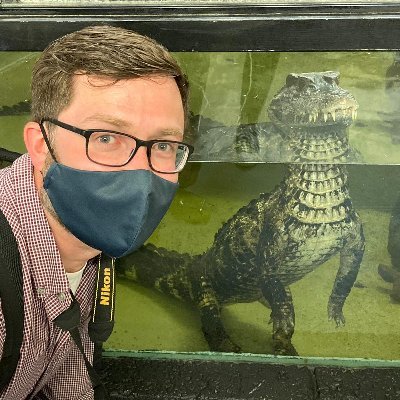Time for #FossilFriday! We like to think of tooth replacement as a tidy process. But here are 4 cross sections of jaws that show chunks of older teeth that were left behind in the bone! Happens a lot in animals that continually replace their teeth, like these extinct synapsids.
For #FossilFriday: the slide that started our paper in Proc B! A jaw cross-section of a therapsid shows some teeth fused in place and others suspended in sockets. That's because they are two stages in the lifecycle of a typical tooth! Mammals keep teeth in the "earlier" stage.
On this, the eve of St. Patrick's Day, I only want to remind you that our distant relatives, Dimetrodon and Sphenacodon (Permian synapsids) had appropriately-shaped tooth roots in cross-section...
Should have the colour balance issue fixed by next week. #FossilFriday
A section through the snout of arguably the cutest little animal to ever go extinct, Diictodon! These tusked, beaked, pug-sized critters from the Permian period belonged to the Synapsida (the group that also includes mammals). #FossilFriday
For #FossilFriday: it's my fav section thru the lower jaw of Captorhinus aguti. An early reptile with multiple rows of teeth!










